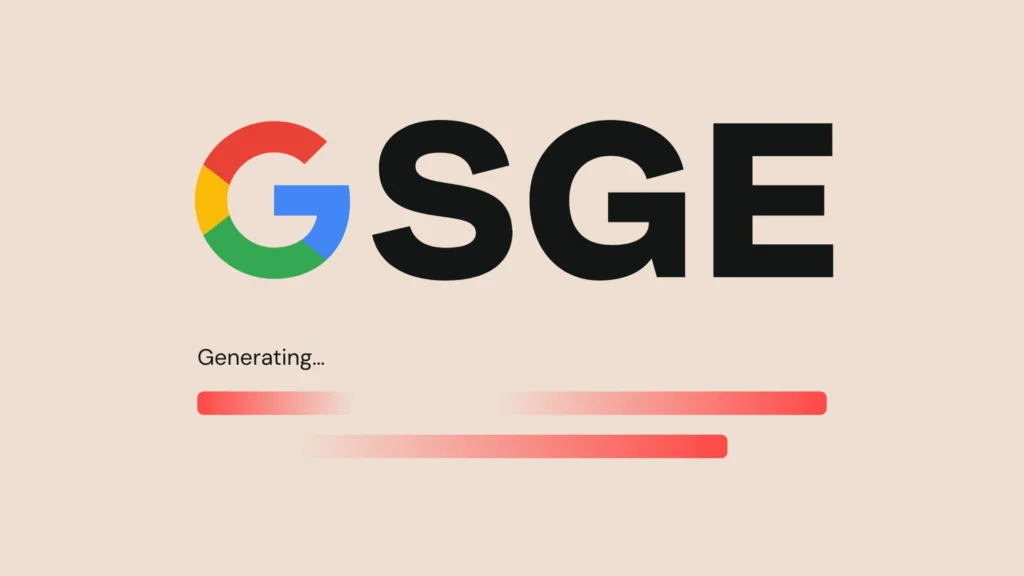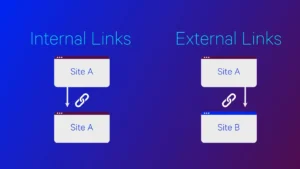Search is changing fast. You type a question, and you see a short answer at the top in seconds. It comes from Google’s generative AI. That change began with SGE. It now shows up as AI Overviews.
A newer AI Mode provides more in-depth assistance when you need a chat-like response. This guide explains all three in plain language. It also shows how to use them today.
What is Google SGE
SGE stands for Search Generative Experience. It was an experiment inside Search Labs. It added AI answers above the usual blue links. SGE ran through 2023 and 2024 as a test. Google then brought the idea to everyone as AI Overviews and retired the SGE name inside Labs.
What is an AI Overview?
AI Overviews are short, AI-written summaries that appear for some searches. They pull key points from the web. They also provide links so you can verify the sources. Think of them as a quick brief with paths to learn more.
Google began rolling this out to everyone in the United States in May 2024. Then it expanded to many more countries.
AI Overviews are now a core part of Google Search. They are like knowledge panels. You cannot turn them off globally. You can switch to a Web filter after you search if you only want plain links.
What is AI Mode?
AI Mode is a newer, chat-like mode in Google Search. It sits under the Search Labs umbrella. You can ask multi-step questions. You can follow up. You can get links and keep the thread. It is meant for tasks that need more reasoning.
AI Mode is available in English in the US, UK, and India. It is rolling out as an experiment with ongoing updates.
Google’s help pages explain that AI Mode leans on the web. If the system is not confident, it can offer links instead of a complete answer. You can use thumbs-up or thumbs-down replies to improve quality.
Google is also testing stronger versions of AI Mode in Labs. Some updates bring advanced reasoning and new ways to analyse images, video, and documents. These rollouts change over time and often start in Labs first.
Where are These Features Available?
- AI Overviews started in the US in May 2024. Google then expanded it to over 100 countries and later into more parts of Europe. Availability and languages keep growing.
- Search Labs and its experiments are available in 7 languages and 120+ countries. Access can depend on local rules.
- AI Mode is available in English in the US, UK, and India as of now. Check your Labs tab to see if you have it.
How to use Google’s generative AI in Search
Use AI Overviews on Desktop
- Go to google.com and search for your topic.
- If an AI Overview is available, it will appear at the top.
- Scan the summary. Click the cited links to verify details.
- Use the suggested follow-ups to refine your question.
- If you prefer classic results, tap the Web filter to see only links.
Use AI Overviews on Mobile
- Open the Google app or a mobile browser.
- Search as usual.
- If you see an AI Overview, scroll through the linked sources.
- Tap a follow-up or ask your own.
- Switch to the Web filter any time.
Turn on “AI Overviews and more” in Search Labs
- Open a new Google tab.
- Tap or click the Labs beaker.
- Toggle AI Overviews and more on.
- You will see AI Overviews in a broader set of queries while the experiment runs. You can toggle it off later.
Turn on AI Mode
- Open the Labs panel on desktop or mobile.
- Find AI Mode and toggle it on.
- Open the AI Mode tab in Search to start a chat-like session.
- Review your AI Mode history when you return.
What kinds of Questions Work Best?
AI Overviews and AI Mode shine with complex or multi-step tasks. Try these patterns.
- “Plan a three-day trip to Jaipur with food spots near Amber Fort.”
- “Compare electric hatchbacks under ₹10 lakh. Focus on range and safety.”
- “Explain what a 529 plan is and what it covers. Keep it simple.”
- “Why is my washing machine vibrating during spin? Show likely causes.”
Google says these experiences help you ask new types of questions and explore faster. You still get links to dig deeper.
Tips to Get Better Results
Be specificAdd details like budget, location, and constraints. “Indoor plants for low light in Mumbai flats” works better than “best indoor plants.”
Use follow-upsTap a suggested next step or type one. Short follow-ups help you steer the answer.
Check the linksOpen the sources under the overview. Compare two or three. This keeps you grounded in real pages.
Use a Web filter for a clean listThis hides features and shows only text links. Suitable for research and citations.
Report issuesUse thumbs up or down in AI Mode. Use feedback in the overview.
Limitations of AI Search
AI features can miss or misread details. They can display outdated data if the sources are obsolete.
They might skip nuance. Always scan the links before you act. That matters for health, finance, travel, and legal topics. Google’s help pages also note that confidence varies, and sometimes you will only see a list of links.
If you prefer not to use the AI box, use the Web filter after searching. There is no global “off switch” for AI Overviews because it is part of core Search.
How Google’s AI Search Has Evolved
- May 2023: Google unveils SGE in Search Labs.
- 2023–early 2024: SGE expands to more testers and regions.
- May 2024: Google launches AI Overviews for everyone in the US. The company plans a wider rollout through the year.
- May–June 2024: Google expands AI Overviews to more countries and regions.
- Mid–Late 2024 onward: Google adds more controls and testing paths in Labs. It introduces AI Mode for deeper tasks.
AI Overviews is the current name for what SGE introduced. That aligns with Google’s help pages.
How AI Creates Answers
Google uses large AI models to read and combine information from the web. It writes a short answer. It shows links to its sources.
When the model is not confident, you may see fewer AI parts and more links. The system is tuned to be helpful and safe. It continues to improve with feedback.
For AI Mode, Google applies stronger reasoning. It keeps the thread so you can refine your task. It can also handle images and other inputs as Google adds features.
How Brands Can Show Up in AI Overview
You cannot “opt in” to AI Overviews. You earn it by being a helpful source. The same quality basics still matter.
- Write clear answers to the questions people ask.
- Show first-hand experience and proof.
- Use simple structure, headings, and scannable lists.
- Cite your sources.
- Keep pages up to date.
- Use descriptive titles and helpful alt text.
Industry guides note that strong E-E-A-T signals help. So do pages that solve a task end-to-end. Good classic rankings also matter. AI Overviews often link to sites that rank well.
Also, watch Google’s core updates and spam policies. These updates aim to reduce low-quality content across the board. That helps the AI find better sources, too.
How to Manage Your AI Search Experience
- Search history can improve your experience in AI Mode. You can use it without history on, but you may lose some continuity. You can delete AI Mode history later.
- Web-only view is one tap away with the Web filter. Use it when you want plain results and no AI box.
- Labs toggles let you opt in or out of experiments like AI Overviews and more, and AI Mode. These controls live in the Labs panel in your Google app or browser.
Conclusion
SGE was just the beginning. AI Overviews brought generative answers to the main results page. AI Mode adds a deeper, threaded way to search.
You can use all three ideas today in simple ways. Keep your questions clear. Use follow-ups. Open the links. Flip to the Web filter when you need a classic list.
If you publish content, focus on real expertise and a helpful structure. That is what earns citations in AI Overviews. It is also what helps you rank.
Search is moving fast. These features will keep growing. The best habit is simple. Ask better questions. Check the sources. Decide with confidence.
FAQs
Q1. Is SGE still available?
The name SGE is no longer used for the public feature. In Labs, you may see “AI Overviews and more.” Public results show AI Overviews.
Q2. Can I turn off AI Overviews?
There is no master switch. Use the Web filter after you search to see only links.
Q3. How do I get AI Mode?
Open Search Labs and toggle AI Mode on. It is available in English in the US, UK, and India right now.
Q4. How do I use Google’s generative AI search on mobile?
Search as usual. If an AI Overview appears, read it and tap the links. In Labs, you can enable AI Overviews and more, and AI Mode for expanded access and follow-ups.
Also Read:
15 Proven Retention Strategies for D2C Fashion Brands
What is Generative Engine Optimization






